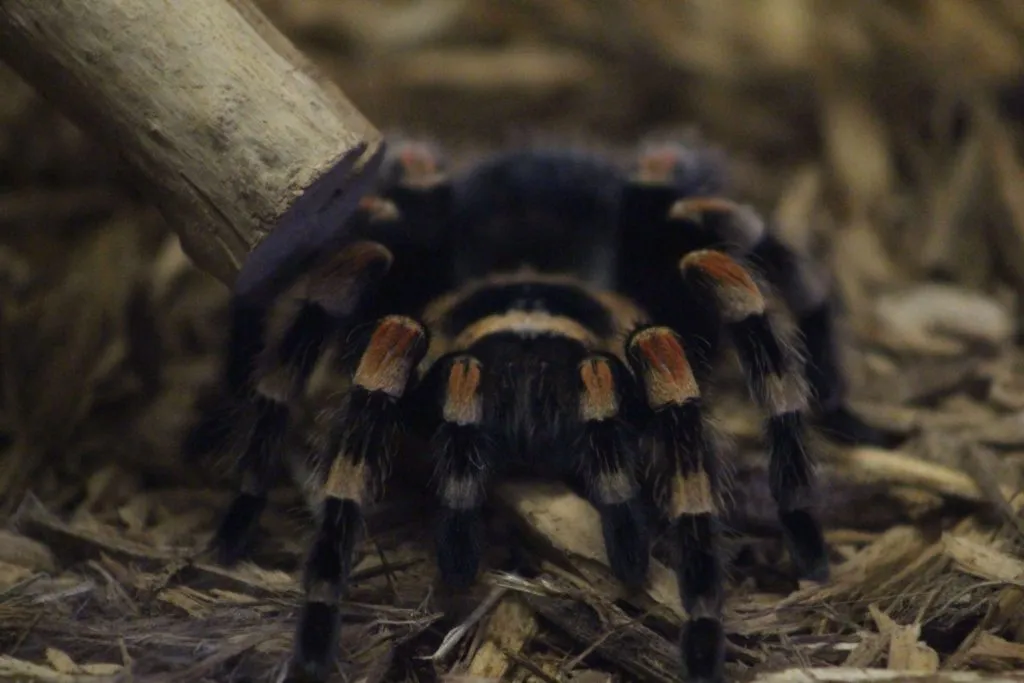Choosing the Right Habitat for Your Red Knee Tarantula
The Red Knee Tarantula (Brachypelma hamorii) is a captivating pet, known for its striking appearance and relatively docile nature. However, ensuring their well-being hinges on providing a suitable habitat. This involves careful consideration of several factors, including enclosure size, substrate, temperature, humidity, and the provision of hiding places. Creating an environment that mimics their natural habitat in the wild is key to a happy and healthy tarantula. The following tips will help you create the perfect home for your Red Knee Tarantula, ensuring it thrives for years to come. Proper care is about understanding their needs and providing an environment that fosters their natural behaviors, which includes a secure and stimulating environment.
Enclosure Size and Type
The size of the enclosure is crucial for your Red Knee Tarantula’s comfort and safety. A juvenile tarantula can start in a smaller enclosure, such as a 5-gallon tank. As the tarantula grows, it will need more space. A good rule of thumb is to provide an enclosure that is at least three times the tarantula’s leg span in width. For an adult Red Knee Tarantula, a 10-gallon or even a 20-gallon long tank is often recommended. The enclosure should have a secure, escape-proof lid, as tarantulas are skilled climbers and can squeeze through small openings. Consider a front-opening enclosure for ease of access and maintenance, which helps to prevent escapes. Good ventilation is also a must to prevent the buildup of mold and maintain air quality.
Substrate and Decor
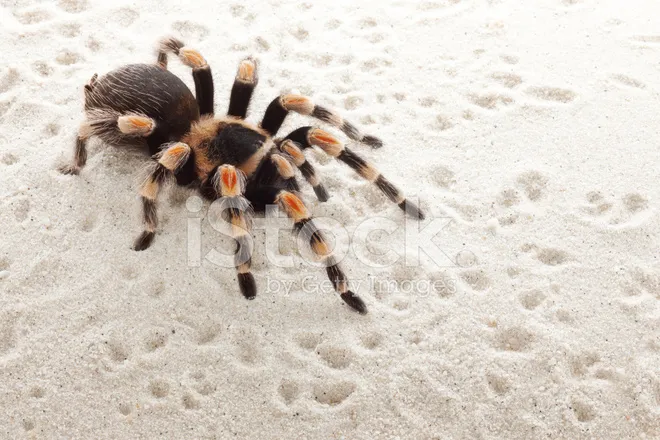
The substrate is the bedding material for your Red Knee Tarantula, and it serves several vital functions including regulating humidity and providing a burrowing medium. A substrate mixture that holds moisture well is essential. Popular options include a mix of coco fiber, peat moss, and a bit of vermiculite. This mix allows the tarantula to burrow, which is a natural behavior. The substrate should be deep enough to allow the tarantula to burrow, typically around 4-6 inches. Decorate the enclosure with items that mimic the tarantula’s natural environment. Include a hide, such as a cork bark or a half-log, where the tarantula can retreat and feel secure. Add some artificial plants or leaves to provide additional cover and aesthetic appeal. Remember to avoid sharp or potentially harmful decorations.
Providing Optimal Temperature and Humidity
Temperature and humidity are critical factors in maintaining a healthy environment for your Red Knee Tarantula. These conditions impact the tarantula’s metabolism, molting process, and overall well-being. Careful monitoring and adjustment of these environmental factors are necessary to ensure your tarantula thrives in its enclosure. Mimicking the Red Knee Tarantula’s natural habitat is essential for long-term health, which means understanding their needs and how to replicate them in a captive environment. This is one of the most crucial parts of care.
Temperature Requirements
Red Knee Tarantulas thrive in a temperature range of 75-85°F (24-29°C). Maintaining a consistent temperature is important, especially during the molting process. You can achieve this with a heat mat placed on the side of the enclosure, not underneath. Using a heat lamp can also work, but it’s important to monitor the temperature closely to prevent overheating. It’s crucial to have a thermometer in the enclosure to accurately monitor the temperature. Avoid direct sunlight, which can overheat the enclosure and be fatal to your tarantula. Ensure proper ventilation to prevent excessive heat buildup.
Humidity Needs
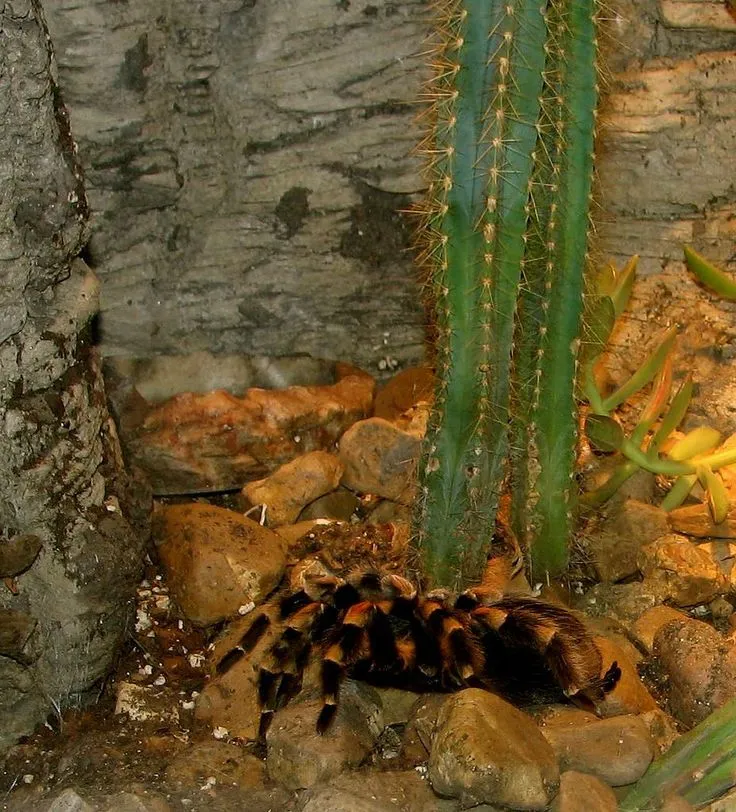
Humidity is another crucial factor. Red Knee Tarantulas require a moderate humidity level, typically between 60-70%. You can measure humidity with a hygrometer. To maintain the appropriate humidity, mist the enclosure with dechlorinated water every few days, or as needed. The frequency of misting will depend on the ventilation and the substrate. Avoid over-misting, as this can lead to mold growth. Ensure proper ventilation to prevent the build-up of excess moisture. The substrate itself will also help maintain humidity. Proper humidity is crucial for successful molting and overall health.
Feeding Your Red Knee Tarantula
Feeding your Red Knee Tarantula appropriately is essential for its growth and well-being. They are opportunistic feeders, meaning they will eat when food is available. However, overfeeding can lead to health problems. Understanding their dietary needs and providing appropriate food items will ensure your tarantula remains healthy and active. This includes knowing what to feed them and how often to do so. Regular feeding and providing a balanced diet are key factors to providing quality care.
Appropriate Food Items
The primary food source for Red Knee Tarantulas is insects. Crickets, mealworms, and roaches are readily available and suitable options. You can also offer other insects, like grasshoppers, as a treat. Make sure the insects are gut-loaded before feeding them to your tarantula. Gut-loading involves feeding the insects a nutritious diet, which then passes on those nutrients to your tarantula. Avoid feeding wild-caught insects, as they may contain parasites or pesticides. Ensure the insects are smaller than the tarantula’s body size, preferably no larger than half the tarantula’s body length. Remove any uneaten food within 24 hours to prevent the growth of mold and mites.
Feeding Frequency

The feeding frequency depends on the tarantula’s age and size. Spiderlings (juvenile tarantulas) should be fed 2-3 times a week. As the tarantula grows, you can reduce the feeding frequency to once a week, or even less for adult tarantulas. Observe your tarantula’s behavior. If it refuses food, it may be in premolt (preparing to shed its exoskeleton), and you should stop feeding. Always provide fresh water, even if the tarantula is not eating. Adjust the feeding schedule based on your tarantula’s activity level, health, and appetite. Overfeeding can cause the tarantula to become overweight, which can affect its health.
Watering and Hydration
Providing a clean and accessible water source is essential for your Red Knee Tarantula’s health. Tarantulas need water to survive and stay hydrated. Dehydration can be a serious health risk for tarantulas, so ensuring they have access to water is crucial. Monitoring water levels and ensuring the tarantula can easily access the water is essential for providing good care. This section will explore the best ways to provide water and keep your tarantula well-hydrated.
Water Source Options
There are several options for providing water to your Red Knee Tarantula. A shallow water dish is the most common method. The dish should be shallow enough to prevent the tarantula from drowning. Use a non-toxic dish, and ensure it is stable so the tarantula cannot tip it over. You can also use a water gel, which provides a safe and slow-release water source, especially for smaller tarantulas. Another option is to mist the enclosure regularly, allowing the tarantula to drink the droplets from the sides of the enclosure or the decorations. Ensure the water source is always clean and refilled regularly to prevent bacterial growth.
Preventing Dehydration
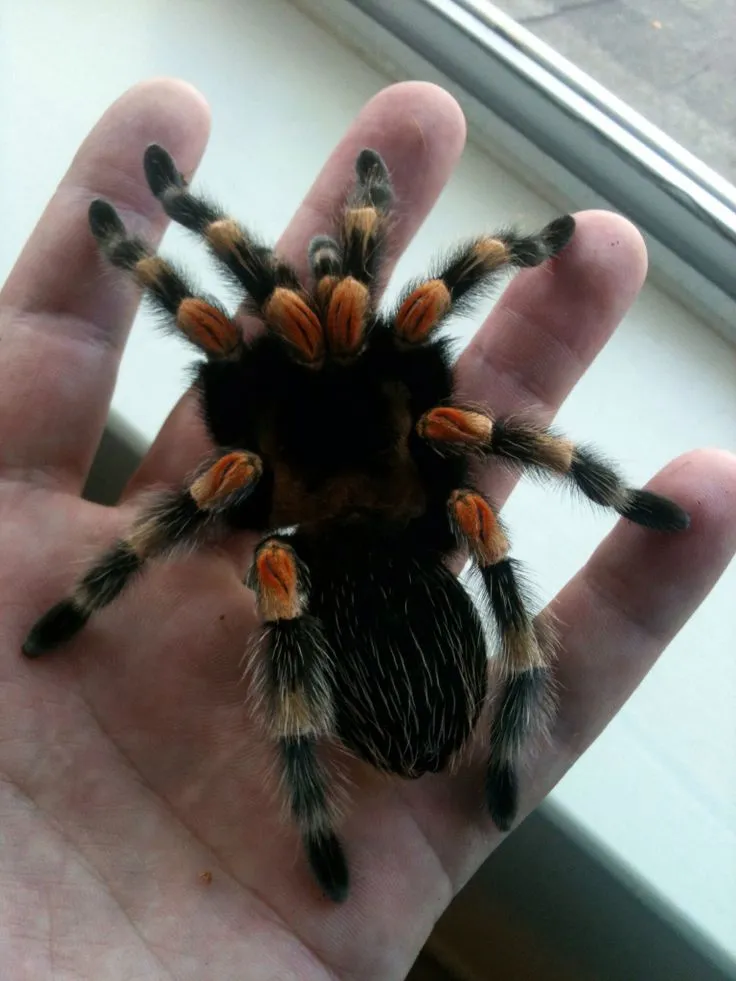
Dehydration is a serious threat to tarantulas. Watch for signs of dehydration, such as a shrunken abdomen, lethargy, or a lack of appetite. Ensure the enclosure has adequate humidity and access to fresh water at all times. If you suspect your tarantula is dehydrated, mist the enclosure more frequently and provide a shallow water dish if you haven’t already. Observe your tarantula’s behavior and adjust your care routine as needed. Keeping the enclosure at the right humidity and ensuring water is always available are the most effective ways to prevent dehydration and keep your tarantula healthy.
Handling and Interaction
While Red Knee Tarantulas are relatively docile, they are not generally considered a handling pet. They can be easily stressed, and mishandling can lead to bites. Bites from Red Knee Tarantulas are not usually life-threatening, but they can be painful. Understanding their behavior and practicing safe handling techniques is critical for your safety and the tarantula’s well-being. It’s essential to create a safe environment and to respect the tarantula’s space.
Safe Handling Practices
If you choose to handle your Red Knee Tarantula, do so with extreme caution and always on a soft surface, such as a bed or a low table, in case it falls. Avoid sudden movements and do not approach the tarantula from above. Use a soft brush or your hand to gently coax the tarantula onto your palm. Always wash your hands thoroughly before and after handling to prevent the transfer of any chemicals or substances. Never handle a tarantula that is in premolt, as they are more vulnerable and stressed during this time. Be aware of the tarantula’s body language, and put it back in its enclosure if it appears agitated or defensive.
Understanding Tarantula Behavior
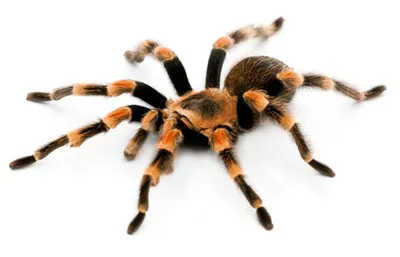
Observe your tarantula’s behavior to understand its needs and detect potential issues. Tarantulas may flick hairs (urticating hairs) from their abdomen as a defense mechanism. These hairs can cause skin irritation and should be avoided. Watch for signs of stress, such as defensive postures or rapid movements. Respect your tarantula’s space and avoid unnecessary handling. Learn to recognize signs of molting, such as a loss of appetite and a change in behavior. Patience and understanding are key to building a positive relationship with your Red Knee Tarantula, and to providing excellent care.
In conclusion, providing excellent care for your Red Knee Tarantula involves understanding their specific needs. From creating a suitable habitat with the right temperature and humidity, to providing proper feeding and hydration, to practicing safe handling, each aspect contributes to their overall health. By following these five care tips, you can ensure your Red Knee Tarantula thrives, allowing you to enjoy the fascinating world of these beautiful arachnids for many years to come.
